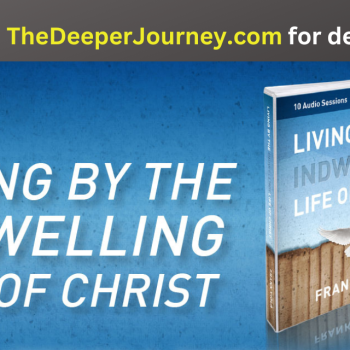John's Gospel features seven signs (semeia) that point us toward Jesus' identity. They are not ends in themselves, but "visible indications of something else" (Koester, 74). They are:
- turning the water into wine (chp. 2)
- healing the Galilean official's son (chp. 4)
- healing the invalid at Bethzatha (chp. 5)
- feeding the 5,000 (chp. 6)
- walking on the sea (chp. 6)
- healing the blind beggar (chp. 9)
- raising Lazarus (chp. 11)
Our text, John 9:1-41, is Jesus' sixth sign in the Gospel of John. It shows us what the Prologue has already told us: that he is the One sent from God to be the light of the world.
The catalyst for the story is a question Jesus' disciples ask him about the cause of a beggar's blindness (9:2). The plot gains momentum through a series of seven questions. As questions and answers follow close on each other's heels, two things increase: the Pharisees' fear and the formerly blind man's faith.
This story in my NRSV Bible is given the serene title: "A man born blind receives his sight." There are at least seven scenes within this story, each one bristling with conflict:
- Jesus walks along and his disciples ask him about the origins of blindness.
- Jesus makes mud and restores the man's sight.
- The man washes in the pool as Jesus told him to. People doubt his identity.
- The Pharisees call him in for questioning. They doubt Jesus' identity.
- The Pharisees call his parents in for questioning. His parents pass the buck back to their son.
- The Pharisees call the formerly blind man in for questioning a second time. He questions their questions. They insult him and drive him out of the synagogue.
- Jesus seeks him out and he worships Jesus, as some Pharisees listen in on the fringes and sound a plaintive note of self doubt.
Have you ever heard one side of a conversation and made a game of trying to figure out the other? Let's try it with a completely made-up half of a conversation. Suppose you're listening to someone on their cell phone.
No, I didn't do what you asked.
.............
I think we both know why.
............
There's nothing wrong with my reasoning ability. I just couldn't do what you asked.
............
No, but I guess I'll find out soon enough.
Those were the answers. Let's see if we can infer the questions.
Why not?
What is wrong with you, you idiot?
Do you know how much trouble you're going to be in because of this?
Here are the answers to the questions that bristle throughout this text.
Jesus answers his disciples: "Neither this man nor his parents sinned; he was born blind so that God's works might be revealed in him" (9:3).
Jesus shifts the discussion from the cause of blindness to what God can do with it. He hints at the symbolic significance of this healing (Brown, 371, Koester, 100).
Despite the Book of Job and Ezekiel 18:20, the theory of a direct causal relationship between sin and sickness was alive in Jesus' day. Exodus 20:5 was cited to explain that God visited the sins of the fathers on their descendants for several generations. A prevailing assumption was that where there is suffering, there must be guilt. Some of the rabbis even speculated that babies could sin in their mothers' wombs (Brown, 371, Koester, 100).
The formerly blind man answers his astonished neighbors: "The man called Jesus made mud, spread it on my eyes, and said to me, 'Go to Siloam and wash'" (9:11).
At this point, the formerly blind man hasn't gotten any further than simply reciting the physical dynamics of the healing.
Siloam means "one who has been sent." It is a signal to the reader of Jesus' identity as the one sent by God who says, "We must work the works of him who sent me" (9:4). We are to discern a connection between Jesus and the healing pool (Lincoln, 281, Koester, 100).
The healed man answers the Pharisees: "He put mud on my eyes. Then I washed, and now I see" (9:9).
He is still at the stage of reciting the physical facts of the healing.
The healed man answers the Pharisees: "He is a prophet" (9:17).
The Pharisees' pesky questions push the man from reciting the physical facts of the healing to reflecting on the spiritual identity of the healer. Prophets in the Old Testament were associated with healings. The closest parallel in this case is with Elisha's healing of the leprosy of Naaman the Syrian in 2 Kings 5. The prophet tells Naaman to wash seven times in the Jordan river, and his leprous skin is restored to health.





